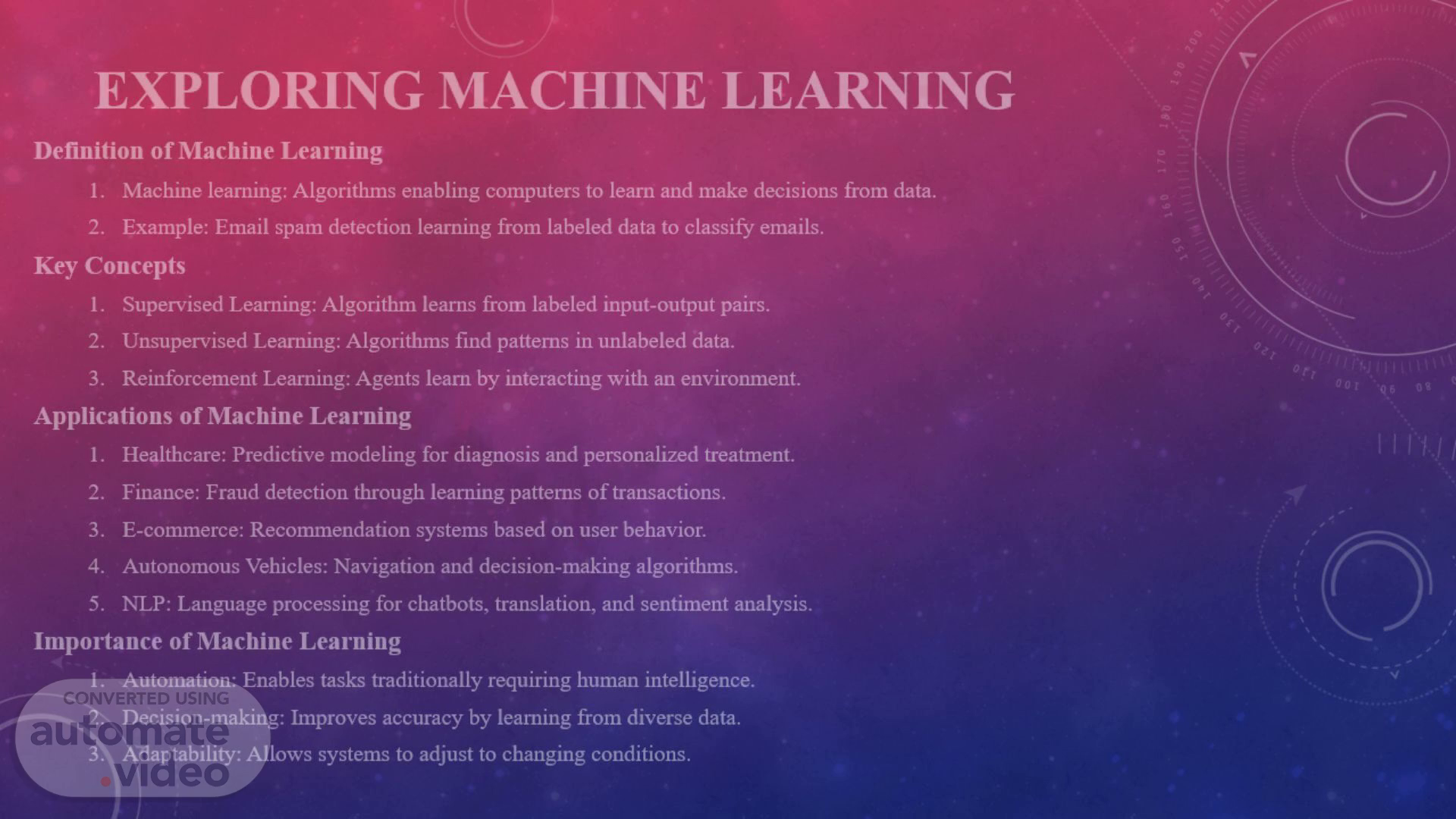
Exploring Machine Learning
Scene 1 (0s)
[Audio] Welcome to our exploration of Machine Learning. In simple terms, machine learning allows computers to learn and make decisions from data. For example, in email spam detection, algorithms can learn to distinguish between spam and non-spam emails. Let's delve into the key concepts and applications..
Scene 2 (37s)
[Audio] Now, let's understand the core algorithms in machine learning. In supervised learning, models are trained on labeled data, making precise predictions. Linear Regression, Decision Trees, and Support Vector Machines are examples. Unsupervised learning uncovers patterns in unlabeled data, with techniques like K-Means Clustering and Principal Component Analysis. Reinforcement Learning, seen in Q-Learning and Deep Q Networks, allows agents to learn by interacting with their environment..
Scene 3 (1m 15s)
[Audio] As we explore machine learning, we encounter challenges. Overfitting and underfitting, bias in data, computational resource considerations, and ethical concerns are vital aspects. Understanding these challenges is crucial for responsible AI development. Moving forward, we observe current trends such as deep learning, explainable AI, and edge computing. Quantum machine learning, transfer learning, and federated learning represent exciting future directions..
Scene 4 (1m 49s)
[Audio] In summary, machine learning transforms industries with diverse applications. Whether it's supervised, unsupervised, or reinforcement learning, understanding the algorithmic landscape is key. Balancing challenges, such as overfitting and ethical considerations, is crucial. Current trends like deep learning and emerging technologies like quantum computing shape the future of machine learning. Remember, this is a dynamic field, always evolving. Encourage further exploration and feel free to engage with any questions..